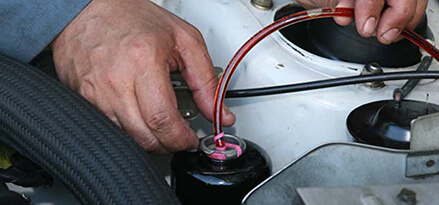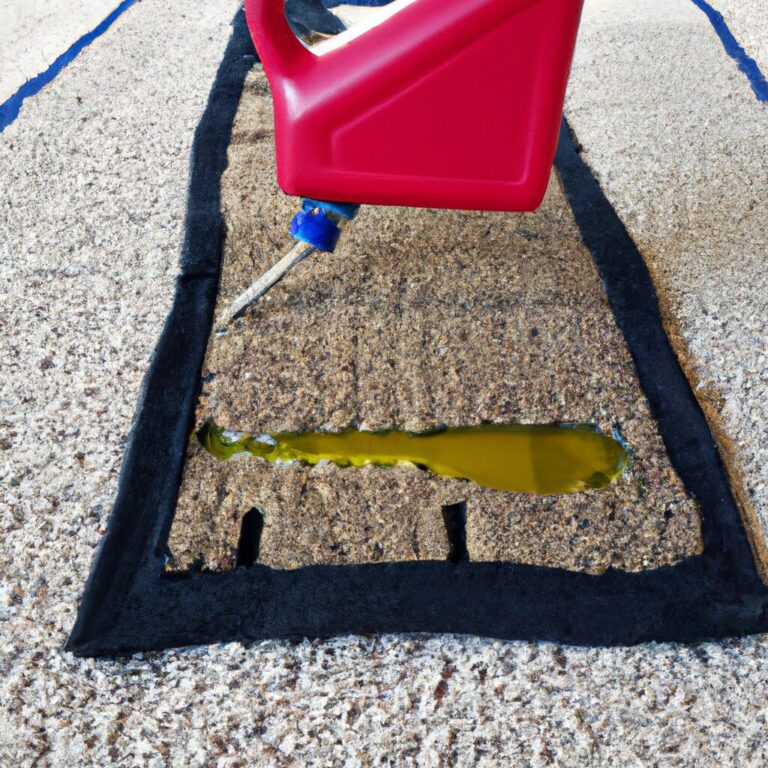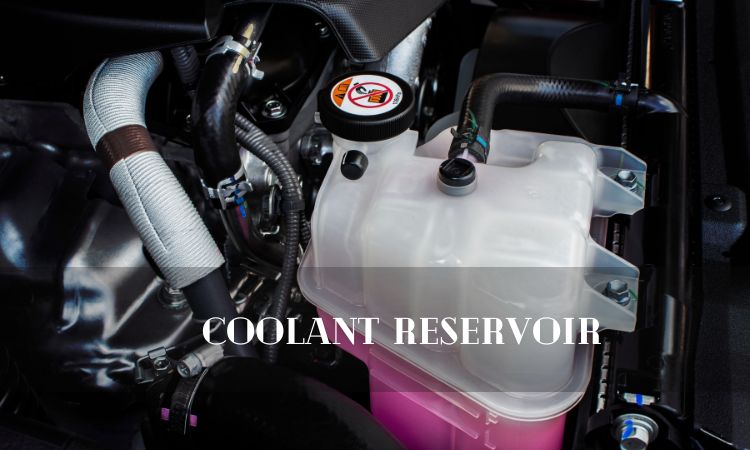Diy Power Steering Repair: Essential Tips
Repairing your power steering system yourself can save you money and time. Follow these essential tips for successful DIY power steering repair.
Are you experiencing issues with your power steering system and considering tackling the repairs yourself? Before you jump in, it’s important to be well-informed on the essential tips for a successful DIY power steering repair. By following these guidelines, you can ensure a smooth repair process and potentially save on costly mechanic fees.
In this guide, we will outline key tips and steps to help you navigate through the power steering repair process effectively. Whether you are dealing with leaks, noise, or steering problems, understanding these essential tips will set you on the right path to fixing your power steering system. Let’s dive in and explore the world of DIY power steering repair together.

Credit: www.youtube.com
Common Power Steering Issues
Common power steering issues can lead to frustration and safety concerns. Understanding the signs of these issues is crucial in maintaining your vehicle’s steering system. Below are the most common power steering problems:
Noisy Power Steering
A whining or squealing noise when turning the steering wheel is a common indication of power steering issues. This noise typically occurs when the power steering fluid is low or contaminated. Regular checks can help prevent this problem.
Stiff Or Hard To Turn Steering Wheel
If your steering wheel feels stiff or requires more effort to turn, there may be underlying power steering problems. This issue can be caused by a failing power steering pump or low fluid levels. Prompt action is necessary to avoid further damage.
Leaking Power Steering Fluid
Leaking power steering fluid can lead to loss of hydraulic pressure, resulting in difficulty steering. Check for puddles or stains under your vehicle to detect leaks. Addressing this problem promptly is essential to prevent major repairs.
Diagnosing Power Steering Problems
Diagnosing Power Steering Problems is crucial for ensuring your vehicle’s smooth operation. By paying attention to warning signs and performing simple checks, you can identify issues early on and prevent costly repairs. Below are some essential tips to help you diagnose power steering problems effectively.
Checking Power Steering Fluid Level
Ensure the vehicle is on level ground. Locate the power steering fluid reservoir and check the fluid level against the markings on the dipstick.
- Low fluid level can indicate leaks or other issues.
- Top up the fluid if needed with manufacturer-recommended fluid.
Examining Power Steering Belts
Inspect the condition and tension of the power steering belts to ensure they are in good shape. Look for cracks, fraying, or excessive wear.
- Replace worn belts immediately to prevent system failure.
Inspecting Pump, Hoses, And Connections
Carefully examine the power steering pump, hoses, and connections for leaks and damages. Check for loose fittings and corrosion.
| Component | Inspection |
|---|---|
| Power Steering Pump | Look for leaks and unusual noises |
| Hoses | Check for cracks or bulges |
| Connections | Tighten any loose connections |
Testing Power Steering Pressure
Utilize a pressure gauge to test the power steering pressure. Compare the readings with manufacturer specifications for accuracy.
- Abnormal pressure readings can indicate internal issues with the system.
Essential Tools For Diy Power Steering Repair
If you’re planning to take on a DIY power steering repair, having the right tools is crucial to ensure a successful and smooth process. By equipping yourself with the essential tools, you’ll be prepared to tackle any power steering issues that may arise. Here are the must-have tools for a DIY power steering repair:
Power Steering Pulley Puller
A power steering pulley puller is a specialized tool designed to remove the pulley from the power steering pump. This tool is essential when replacing a power steering pump or working on the pulley. It allows for easy removal without causing damage to the pulley or pump. With a power steering pulley puller, you can effortlessly complete your repair with precision.
Power Steering Pressure Tester
A power steering pressure tester enables you to diagnose and analyze the pressure levels in your power steering system. This tool plays a crucial role in identifying any leaks or issues within the system, allowing you to fix them effectively. With a power steering pressure tester, you can accurately troubleshoot the problem and ensure your power steering system is operating at its optimal performance.
Fluid Line Clamp
A fluid line clamp is an essential tool that helps prevent fluid leakage when working on power steering components. By clamping off the fluid lines, you can avoid a messy cleanup and potential damage to your vehicle. This tool provides a secure seal, keeping the fluid from leaking out during your repair. With a fluid line clamp, you can work confidently knowing that the fluid will stay contained.
Torque Wrench
A torque wrench is a precise tool that ensures accurate tightening of bolts. When working on power steering repairs, it is vital to tighten bolts to the manufacturer’s specifications. Over or under-tightening can lead to problems down the line. By using a torque wrench, you can achieve the recommended torque, providing a secure and reliable connection for your power steering components.
Power Steering Fluid Exchange Machine
A power steering fluid exchange machine helps in efficiently flushing and replacing old or contaminated power steering fluid. By using this tool, you can remove built-up debris and contaminants from the system, ensuring optimum performance. A power steering fluid exchange machine simplifies the fluid replacement process and helps prolong the lifespan of your power steering system.

Credit: www.reddit.com
Step-by-step Power Steering Repair Guide
Are you experiencing issues with your power steering system? It may be time for a DIY power steering repair. This step-by-step power steering repair guide will walk you through essential tips for maintaining and repairing your power steering system. Whether you need to replace a worn power steering belt, repair a leaking power steering hose, remove and reinstall a faulty power steering pump, or flush and refill power steering fluid, this guide has got you covered.
Replacing A Worn Power Steering Belt
To replace a worn power steering belt, follow these steps:
- Consult your vehicle’s manual for belt replacement instructions.
- Locate the tensioner pulley and release tension by using a wrench or ratchet to remove the old belt.
- Install the new belt and ensure it is properly aligned with the pulleys.
- Apply the necessary tension and secure the tensioner in place.
Repairing A Leaking Power Steering Hose
If you have a leaking power steering hose, here’s what you should do:
- Identify the location of the leak and confirm if the hose needs repair or replacement.
- If repair is necessary, use a hose repair kit to patch or seal the leak.
- If replacement is required, disconnect the old hose and install a new one, ensuring a secure fit.
Removing And Reinstalling A Faulty Power Steering Pump
When dealing with a faulty power steering pump, adhere to these steps:
- Disconnect the hoses and mounting bolts securing the pump in place.
- Remove the faulty pump and install a new one in its place.
- Reconnect the hoses and securely fasten the mounting bolts.
Flushing And Refilling Power Steering Fluid
For flushing and refilling power steering fluid, follow these instructions:
- Locate the power steering fluid reservoir and remove the old fluid using a turkey baster or similar tool.
- Refill the reservoir with the recommended type of power steering fluid specified in your vehicle’s manual.
- Start the engine and turn the steering wheel from lock to lock to eliminate air from the system.
- Check the fluid level and adjust if necessary.
Preventive Maintenance Tips For Power Steering
When it comes to your vehicle’s power steering system, preventive maintenance plays a crucial role in ensuring smooth and efficient operation. By regularly inspecting and maintaining the power steering components, you can prevent potential issues and extend the lifespan of the system. Here are some essential preventive maintenance tips for power steering that can help you avoid costly repairs down the road.
Regularly Check Power Steering Fluid Level
Check the power steering fluid level at least once a month to ensure it is at the recommended level. Low fluid levels can lead to increased wear and tear on the system components.
Inspect And Replace Worn Belts And Hoses
Regularly inspect the power steering belts and hoses for signs of wear, cracks, or leaks. Replace any worn or damaged belts and hoses to prevent potential power steering failures.
Clean And Lubricate Power Steering Components
Keep the power steering components clean and well-lubricated to prevent premature wear and corrosion. Regular cleaning and lubrication can help maintain the smooth functioning of the system.
Flush Power Steering System At Recommended Intervals
Flush the power steering system according to the manufacturer’s recommended intervals to remove any contaminants and old fluid. This can help prevent the buildup of debris and extend the life of the power steering components.

Credit: www.mobil.com
Frequently Asked Questions Of Diy Power Steering Repair: Essential Tips
How To Fix Power Steering At Home?
To fix power steering at home: 1) Check power steering fluid level. 2) Inspect for leaks in hoses or connections. 3) Replace damaged parts, like belts or pumps. 4) Bleed the system if air is trapped. 5) Consult the vehicle’s manual for specific instructions.
How Can I Make My Power Steering Better?
To improve power steering, check fluid levels, inspect for leaks, and ensure proper belt tension. Consider flushing and replacing old fluid, and alignment adjustments if needed.
Does Lucas Power Steering Stop Leak Really Work?
Yes, Lucas Power Steering Stop Leak is effective in stopping leaks in power steering systems.
What Is The Best Way To Stop A Power Steering Leak?
To stop a power steering leak, identify the source of the leak using a leak detection kit or by inspecting the power steering system. Replace the faulty component, such as a seal or hose, and ensure all connections are tight.
Lastly, refill the power steering fluid to the appropriate level.
Conclusion
Tackling a DIY power steering repair can be a challenging task. However, by following the essential tips outlined in this blog post, you can successfully navigate this repair process. Remember to gather all necessary tools, carefully follow step-by-step instructions, and prioritize safety at all times.
By taking these precautions, you can save money and gain the satisfaction of fixing your power steering system on your own. Happy repairing!


